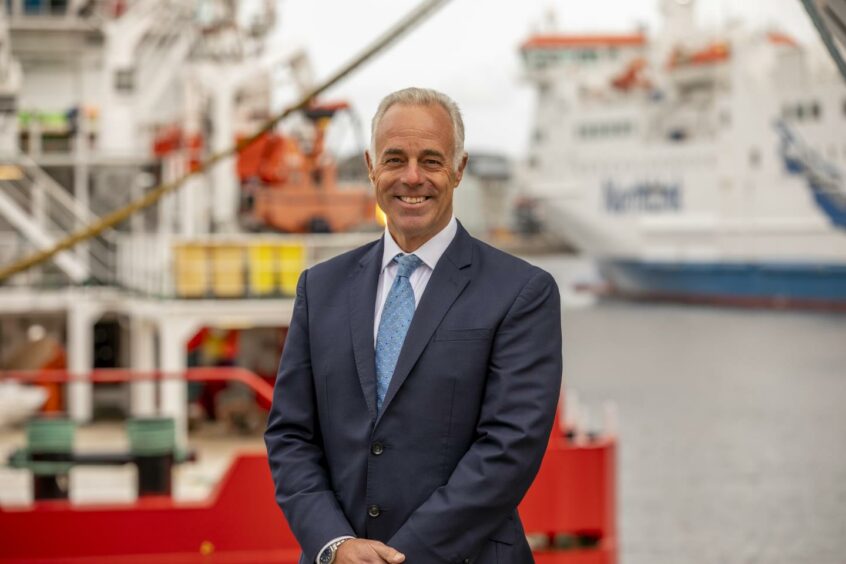
It has been 18 long months of stormy seas for Aberdeen harbour, but Bob Sanguinetti is confident the port and its £350 million expansion project is well on its way to reaching safe haven.
The new chief executive of Aberdeen Harbour Board (AHB) has taken the helm of the UK’s oldest registered company at a critical time.
“It is one of the biggest, if not the biggest, marine construction infrastructure projects in the UK at the moment and the biggest by far a trust port like Aberdeen has undertaken,” he said, as he noted the scale of the achievement that is now emerging from the waters of Nigg Bay.
For example, the striking south breakwater built using thousands of spikey, concrete accropodes which are manufactured on site is now in place. As it gets closer to completion, it is now more a land-based project as efforts focus on completing the 1.4km of quayside which will accommodate the “bigger, deeper, wider” vessels that are expected to dock.
With the development having survived the early departure of its main contractor and a pandemic, Mr Sanguinetti sounds confident the South Harbour will have all it requires to be operational by October 2022.
Yet challenges remain.
A few months before Mr Sanguinetti arrived, AHB chairman Alistair Mackenzie sounded the alarm that the funding to deliver some of the important aspects of the new harbour was at risk of running dry.
Mr Sanguinetti insisted the project is “running to budget” but it currently faces price hikes in building materials as well as having suffered reduced income during Covid.
He said: “We have had to modify the project but not substantially and we will get there eventually.”
The South Harbour will still be on track for its initial “green port strategy” – with the aim of offering electric shore power for ships as well as offering capacity for future fuel requirements. But he still thinks there is a case for government to cough up more, so he issued a plea. “Aberdeen harbour is at the forefront of the support to the offshore sector and has been for the last 50 years,” he said.
“It has amassed a huge amount of expertise in partnership with the big energy companies with the logistics supply chains in and around Aberdeen.
“The plea is for both UK and Scottish governments to support Aberdeen and Aberdeen harbour in particular so that we can continue playing that prominent role and leading the way in terms of energy transition in our aspiration to achieve net-zero.”
Meanwhile, the north-east was overlooked in a £1 billion competition to develop carbon capture and storage projects (CCUS) by the UK government.
Mr Sanguinetti said he was “disappointed and surprised” that the Acorn project, which would have galvanised the region’s shift away from fossil fuels, did not land nearby.
But Mr Sanguinetti, who came from a 30-year career in the Royal Navy, remains unperturbed.
He has not ruled out the potential for further UK Treasury funding. He pointed to allocations for transport and clean-tech in the Budget, which chime with the harbour’s plans.
What he would like to see is clarity in the current impasse over Holyrood’s vision for green ports versus Westminster’s proposals for free ports. AHB has joined forces with Peterhead harbour, and both Aberdeen and Shire local authorities to win the designation whichever form it takes.
He did not suggest preference, just a desire for a decision either way.
Meanwhile, like many, his eyes are on the prize of the Scotwind leasing round which will determine the establishment of 15 major offshore windfarms in Scottish waters in a decision expected early next year.
“A lot of those wind farms will be directly off the coast of Aberdeen and the harbour will be perfectly placed to support the construction, the development, the servicing of those wind farms, not just in terms of the start of the project life but throughout the next 20, 30, 40 years of that lifespan,” he said.
Recommended for you
